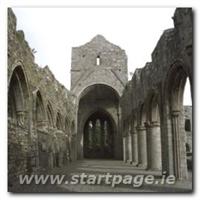Boyle Abbey of the Cistercian Order

Boyle Abbey is founded by the Cistercian order, a Roman Catholic religious order which is commonly referred to as the White Monks for the color of their habits. This was their first successful institution in Connacht. The archbishop of Armagh, St. Malachy, invited the Cistercians to Ireland to seek assistance in reforming the old Irish church for the reason that the Irish church is not on the same line as with the rest of Europe which is, generally speaking, Christian. They had developed a strategy to further spread their religious ideologies. The monks were given the mission to search for one daughter house after another. This proved to be successful in a short period of time which is roughly ten years after its foundation. However, looking for a permanent home is not easy still for the Cistercians especially in Connacht. Finally, in the year 1611, they chose to stay at the comforts of Boyle.
The MacDermott lords of Moylurg were believed to have been the patrons of the church. It took builders about perhaps sixty years to complete the entire structure of the monastery due to lack of financial assistance and the slow progress of construction. The monastery was done by the year 1220. The floor plan was designed by the Cistercians according to their own traditional models. On the northern part of a generally rectangular space was a church and on the other side is a chapter house provided for the monks' gatherings and other religious meetings. The third side included a kitchen and a dining hall while the fourth has the dormitory and storage rooms.
However, only a portion of this cloister remained. In 1952 the Elizabethans converted it into a camp, after which the Cromwellians took it over in the year 1645, and later on some team did quarry in the area and so explains the little piece of it that survived. In spite of these changes the beauty of the monastery remained with a square tower added during the thirteenth century as a supplementary accent. The design of the church follows the strict and conventional plan of the Cistercians from the nave to the aisles, what goes with the north and south crossing, windows and walls. It took its influences from the Burgundy fashion although in a general sense, along with particular details, it is of the Western England style. The carvings and other decorations must have been the work of some local masons, few of them were among the creators of the most imaginative and ingenious architectural sculpture in the Western Ireland during the early 1200s also known as the School of West .
As of today, the Boyle Abbey stands as a national monument open for public visit.
See more on:
-
Tourism / Travel Articles